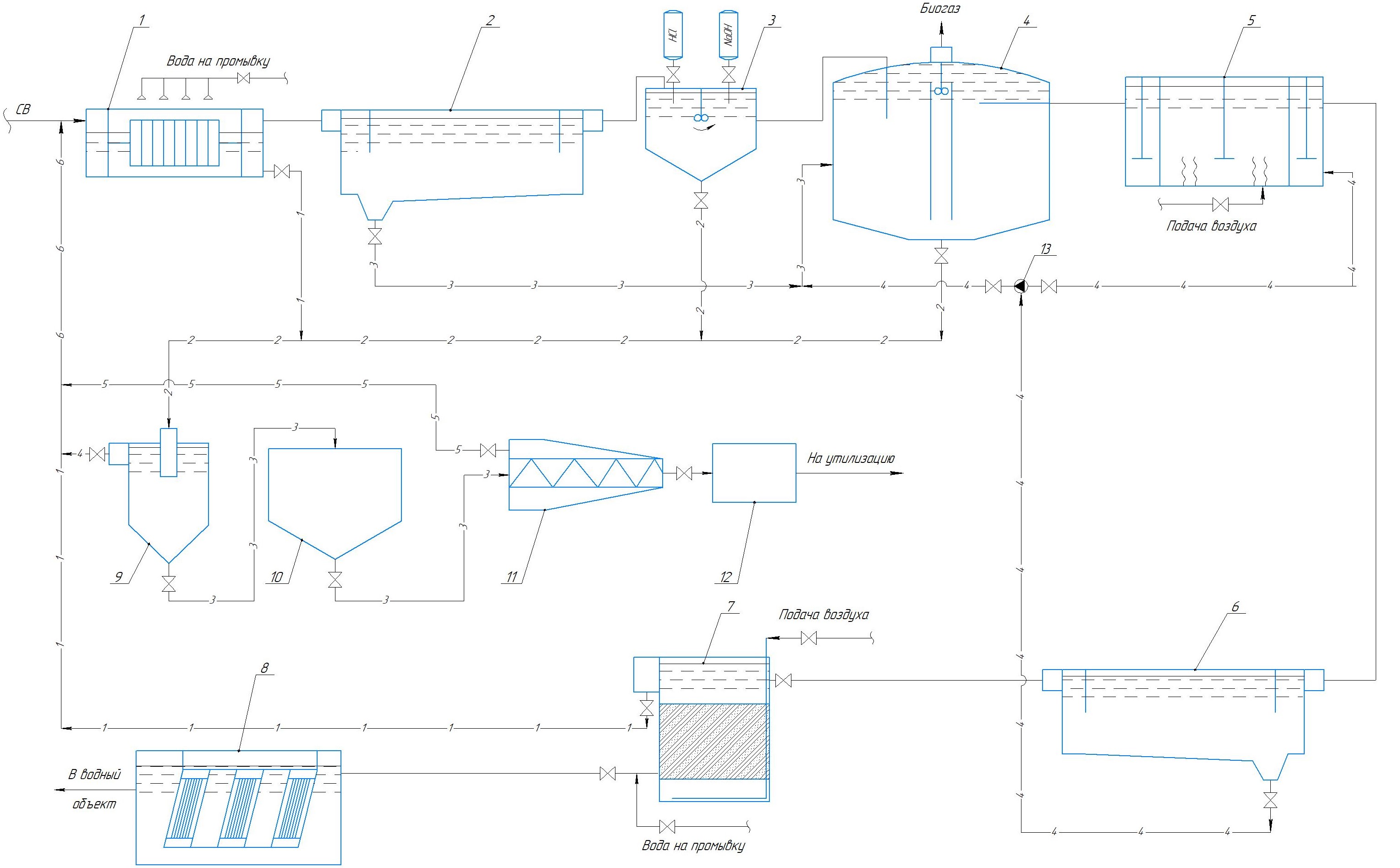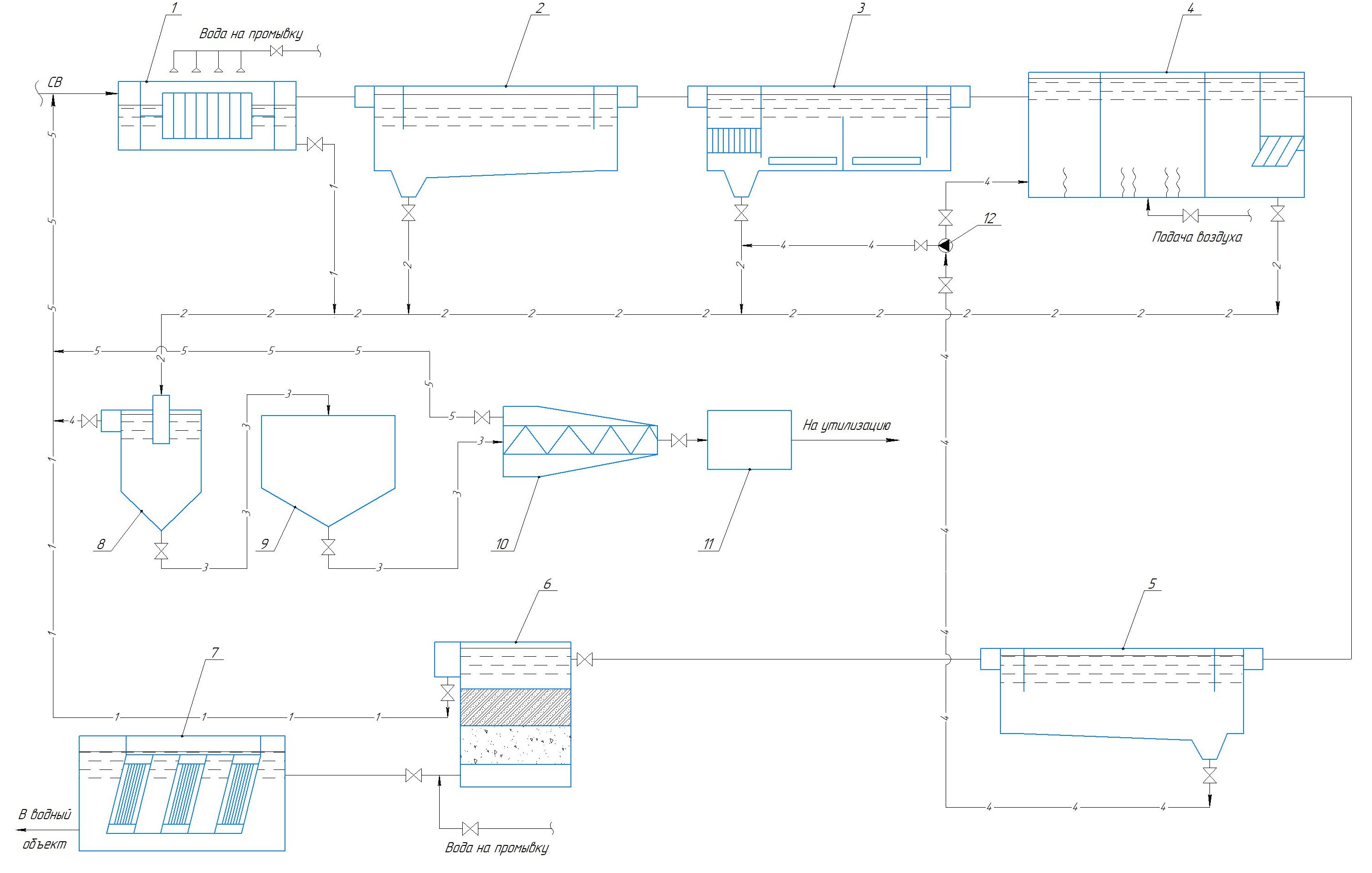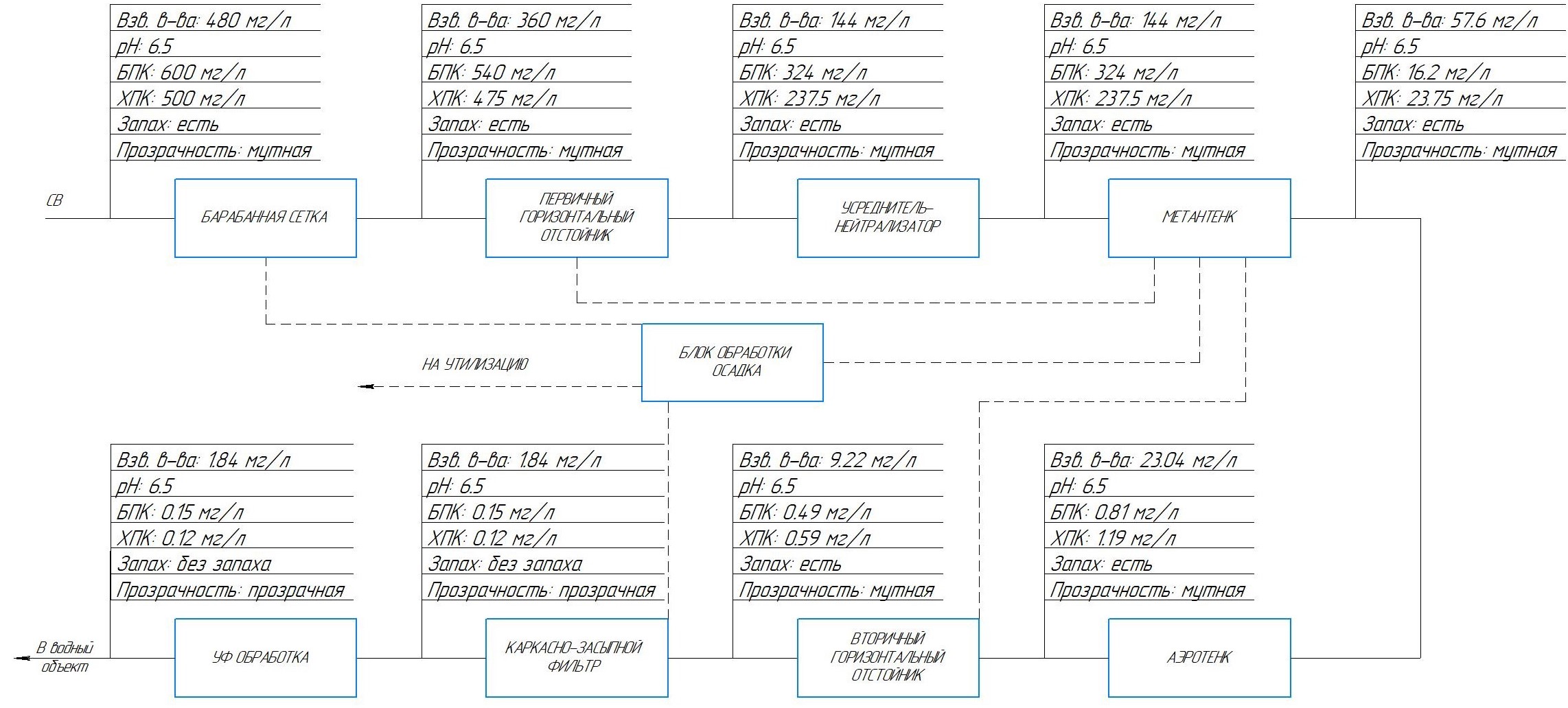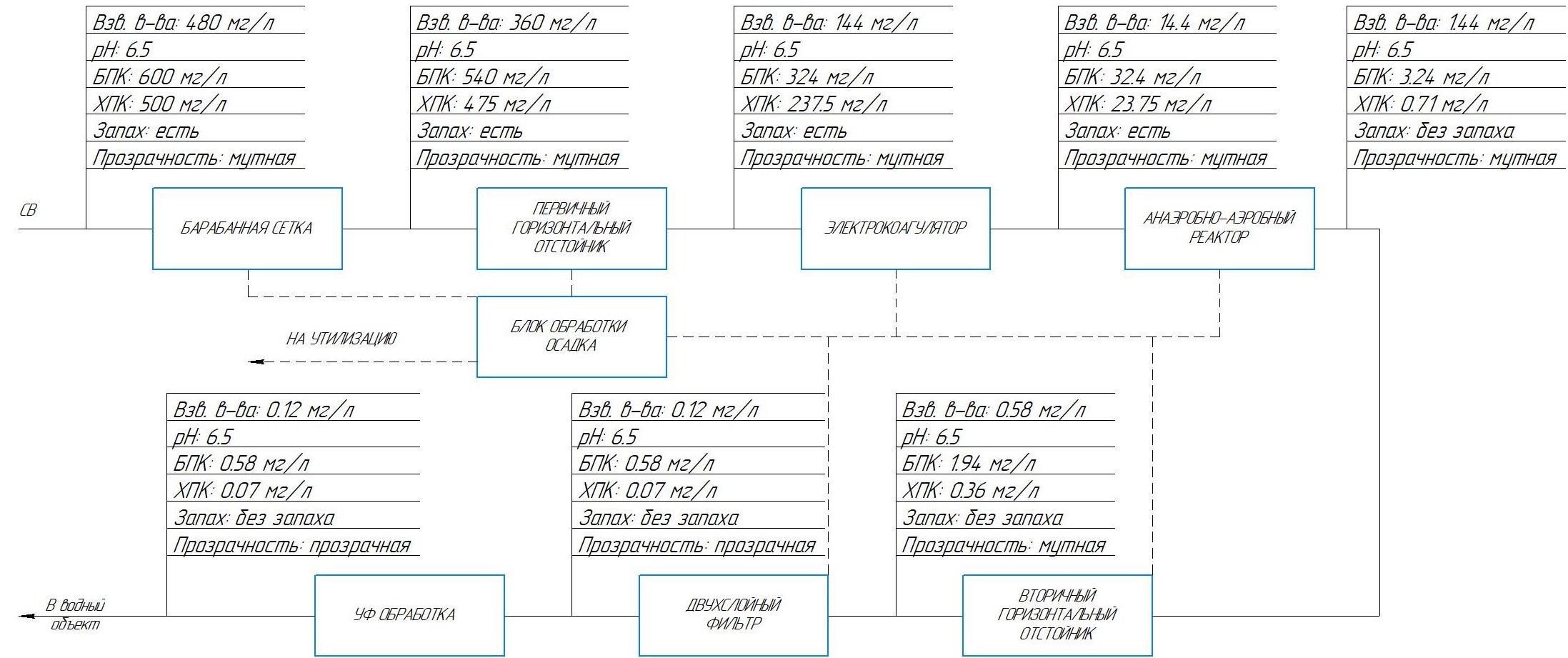СРАВНИТЕЛЬНАЯ ХАРАКТЕРИСТИКА СХЕМ ОЧИСТКИ СТОЧНЫХ ВОД ПИВОВАРЕННЫХ ПРЕДПРИЯТИЙ
СРАВНИТЕЛЬНАЯ ХАРАКТЕРИСТИКА СХЕМ ОЧИСТКИ СТОЧНЫХ ВОД ПИВОВАРЕННЫХ ПРЕДПРИЯТИЙ
Аннотация
Пивоваренные предприятия являются значительным источником формирования различного типа выбросов (в том числе биологических), растворённых в сточных водах, при больших объёмах производимой продукции. Поэтому разработка схем очистки сточных вод таких предприятий является важной актуальной народнохозяйственной задачей.
В представленной научной статье произведён сравнительный анализ схем очистки сточных вод пивоваренных предприятий. Исследование было проведено путем сравнения эффективности биологических методов очистки. В статье также обсуждаются особенности протекания процессов биологической очистки при использовании различных технологических схем, а также преимущества и недостатки каждого метода. Результаты исследования могут быть использованы для повышения эффективности очистки сточных вод пивоваренных предприятий и других промышленных объектов.
1. Introduction
Despite the wide variety of wastewater treatment methods for brewing plants, it is impossible to choose a universal scheme, since wastewater contains a wide range of pollutants.
Most breweries in Russia discharge wastewater to municipal treatment plants. In order to ensure that the quality of wastewater meets the requirements of water utilities, on the one hand, and in order to reduce payments for wastewater, on the other hand, large Russian brewing companies are equipped with local treatment plants.
At a number of enterprises, based on the analysis of the pollution of the generated wastewater and the efficiency of the existing treatment facilities, as well as taking into account the requirements for the quality of treated water for reuse, discharge into the city sewer or discharge into the reservoir, they develop and implement treatment facilities management systems with the possibility of their improvement and modernization, automated control, and increased treatment efficiency
.The purpose of this work was to reasonably choose a treatment scheme for wastewater at a brewery, based on an analysis of studies already carried out on the effectiveness of treatment schemes for different industries.
The wastewater of brewing plants poses a significantly greater risk to the environment compared to other types of pollution. They are formed during washing of sedimentary beer liquid yeast, discharge of camp sediments into sewers and washing of process vessels used at the stages of beer fermentation and additional fermentation
. Indicators characterizing the pollution of wastewater of such enterprises: oxidizability, biological oxygen consumption in 5 days (BPK5), chemical oxygen consumption (COD) and suspended matter content are on average twice as high as in typical urban effluents, but at individual enterprises they may differ from each other up or down. All these contaminants adversely affect the organoleptic properties of water. The average pollution of wastewater discharged into the sewage system is characterized by the following indicators: suspended solids 72-322 mg/l; pH 6-7; BPK5 208-696 mg/l; CPK 600 mg/l , . Despite the wide variety of wastewater treatment methods for brewing plants, it is impossible to choose a universal treatment scheme, since wastewater contains a wide range of possible pollutants.Most breweries in Russia discharge wastewater to municipal treatment plants. In order to ensure that the quality of wastewater meets the requirements of water utilities, on the one hand, and in order to reduce payments for wastewater, on the other, large Russian brewing companies are equipped with local treatment plants. Analyzing the literature data of domestic and foreign authors, we can conclude that the best technological solution is biological treatment of wastewater in anaerobic-aerobic conditions. This process allows to completely clean the waste water to the established standards (for CPK, BPK and suspended solids) and return a large amount of water to the process cycle.
2. Research methods and principles
The classical scheme of waste water treatment facilities is a set of such treatment facilities as: drum mesh, primary horizontal settling tank, neutralizer averaging tank, methane tank, aerotank, secondary horizontal settling tank, frame-fill filter with subsequent disinfection and discharge into the water body (Fig. 1).

Figure 1 - Classic Brewery Wastewater Treatment Scheme:
1 - drum mesh; 2 - primary horizontal settler; 3 - CB neutralization unit; 4 - methane tank; 5 - aerotank displacer; 6 - secondary horizontal settler; 7 - frame-and-fill filter; 8 - UV unit; 9 - precipitator; 10 - sludge accumulator; 11 - centrifuge; 12 - cake sludge accumulator; 13 - sludge pump
So, after the primary horizontal settler, you can put an electric coagulator. An electrocoagulator is a device that is used to treat wastewater by electrocoagulation and uses the method of physicochemical treatment.
The principle of operation of the electrocoagulator is based on the use of an electric field for coagulation and flocculation of suspended particles and colloids in water. This is due to the electrolysis process, in which metal ions accumulate on the electrodes, which then react with substances in water, leading to their coagulation and deposition
.Electrocoagulators can be used to remove various contaminants from wastewater, including oils, fats, proteins, carbohydrates and other suspended particles. They can also be used to adjust the pH and remove organic and inorganic substances that cannot be removed by other purification methods
.In the classical system, the biological treatment stage is a complex of structures – methane tanks and an aerotank. Currently, technologies allow combining the processes occurring in these structures into one reservoir – an anaerobic-aerobic bioreactor. Anaerobic-aerobic bioreactor is a waste water treatment technology that combines two processes: anaerobic and aerobic biological decomposition of organic substances
, .Purification in the bioreactor begins with the waste water being supplied to the anaerobic reservoir. Here, organic matter is decomposed by bacteria that release methane and carbon dioxide. Waste water is then transported to an aerobic reservoir, where oxygen is fed into the water to allow the growth of aerobic bacteria that complement the decomposition of organic matter
, , .The scheme modernized taking into account the above modifications is shown in Figure 2.

Figure 2 - Upgraded Brewery Wastewater Treatment Scheme:
1 - drum mesh; 2 - primary horizontal settler; 3 - electrocoagulator; 4 - anaerobic-aerobic reactor; 5 - secondary horizontal settler; 6 - double-layer filter; 7 - UV unit; 8 - sedimentation accumulator; 9 - sludge accumulator; 10 - centrifuge; 11 - cake sludge accumulator; 12 - sludge pump
Table 1 - Pollutant content in brewery effluents using classic and upgraded treatment systems
Indicator | Data | Maximum allowable concentration | Results of wastewater treatment in the classical scheme | Results of wastewater treatment in the modernized scheme |
Suspended solids, mg/l | 480 | 10 | 1,84 | 0,12 |
BPK, mg/l | 600 | 3 | 0,15 | 0,62 |
CPK, mg/l | 500 | 30 | 0,12 | 0,07 |
pH | 6,5 | 6,5 – 8,5 | 6,5 | 6,5 |
Smell | + | - | - | - |
Transparency | - | + | + | + |
The table of values shows that the upgraded system is slightly inferior to the classic one in terms of the degree of wastewater treatment in terms of BPK, but is ahead in terms of suspended solids and CPK.
3. Main results
A comparison of the two process diagrams for effluent treatment efficiency is presented below.

Figure 3 - Efficiency of classic waste water treatment scheme

Figure 4 - Efficiency of the upgraded wastewater treatment scheme
To optimize processes and extract the greatest economic benefits, an analysis of the cost and economic efficiency of two wastewater treatment systems was carried out: classical and modernized. At the same time, equipment prices are taken according to manufacturers.
For the classic cleaning scheme, operating and capital costs average 18 million and 51 million rubles, respectively, while for the modernized 15 million and 21 million rubles. Payback periods for the classic and modernized scheme are 2.7 and 1.45 years, respectively.
In order to compare the efficiency of the two wastewater treatment systems, calculations of the negative impact on the environment (NVOS) and the prevented environmental damage were carried out based on the Government Decree
, , . The results showed that the classical system has a higher NVOS but is marginally inferior in environmental damage averted, while the upgraded system has a lower NVOS due to more efficient cleaning of suspended solids. The results of calculating fees for NVOS for the classical and modernized system amounted to 62 thousand and 8 thousand rubles, respectively. The prevented damage is 162 million rubles.In the future, it is planned to create a software methodology for automating NVOS calculations in accordance with the specified Decree in the Python programming language
, .4. Discussion
As a result of a comparative analysis of the cost of process equipment of waste water treatment schemes, the following conclusion can be drawn: the cost of equipment for a modernized treatment scheme turned out to be lower than for a classic one.
However, it should be noted that when deciding for the final selection of the wastewater treatment scheme, it is necessary to take into account not only economic parameters, but also other factors, such as the efficiency of treatment, the daily volume of treated effluents, since for each volume they offer their own types of treatment facilities for specific purposes, which can significantly affect the cost of equipment.
A modernized wastewater treatment scheme may be suitable for enterprises with limited space, if this plays an important role in the selection of equipment. Limited electricity resources may also be a decisive factor in the selection of suitable facilities. For example, in order to maintain stable operation of the aeration tank, it is necessary to use additional resources to supply air for the aeration process, while in the biofilter processes associated with the use of an oxidizing agent are carried out at a natural level without requiring any investment. The use of biofilters instead of aerotanks will reduce the amount of waste in the process, the removed biofilm can go to the preaerator and continue its work where in the classical system excess active sludge goes to the sediment treatment unit.
In turn, the classic scheme can withstand more pollutants, and it should be used if production waters contain colossal concentrations of pollutants.
5. Conclusion
Thus, the goal of the work was fully achieved - a generalized version of the technological scheme for the treatment of wastewater of the brewery was chosen, which was then modernized taking into account the use of the most modern equipment. Economic indicators of the selected and modernized options have been calculated; also, for each of them, calculations of the negative impact on the environment were carried out. Recommendations have been developed for choosing one of the two options for the scheme in different cases.
It has also been proven that the modernization of a particular selected scheme shows the rationality of using analogues and modifications to achieve high efficiency of wastewater treatment, but with greater economic benefits and savings in the area of the units.
